BY MIKA NAGAMOTO
Peru is an incredibly diverse country with endless adventures and destinations for travel. After my travel study program, I was eager to explore the areas beyond Lima. My family decided to fly out to meet me after my program and together we spent two weeks exploring Cusco, The Sacred Valley, and Machu Picchu. It was an unforgettable journey.
Cusco
The day after my program ended, I took an hour-long flight to Cusco where I met up with my family. Cusco has a whomping elevation of 11,152 feet so we wanted to make sure we were well acclimated before starting our adventures. We spent the first two days acclimating by exploring the many restaurants and museums in the historical capital of the Inca.
We visited several impressive colonial churches such as the Catedral de Cusco, Iglesia de San Blas, and the Compañia de Jesús. Entrance fees for these churches were about 10 soles for adults and 5 soles for students with a university ID. To learn more about the origins of the Incas we went to the Museo de Arte Precolombino. The “MAP” has several galleries of sculptures, textiles, metal-work, and artifacts from 3000 years of Andean art. My favorite destination in Cusco was Sacsayhuamán (spelled various ways). These are ruins located in the mountainous outskirts of the city. We explored the remarkable religious sites, enjoyed the open views of Cusco, and even played on the Inca slides made out of unique rock formations. Entrance to these ruins is around 70 soles and many companies offer transportation and tours in English. It is also only a two-kilometer hike to get to the ruins from Cusco.
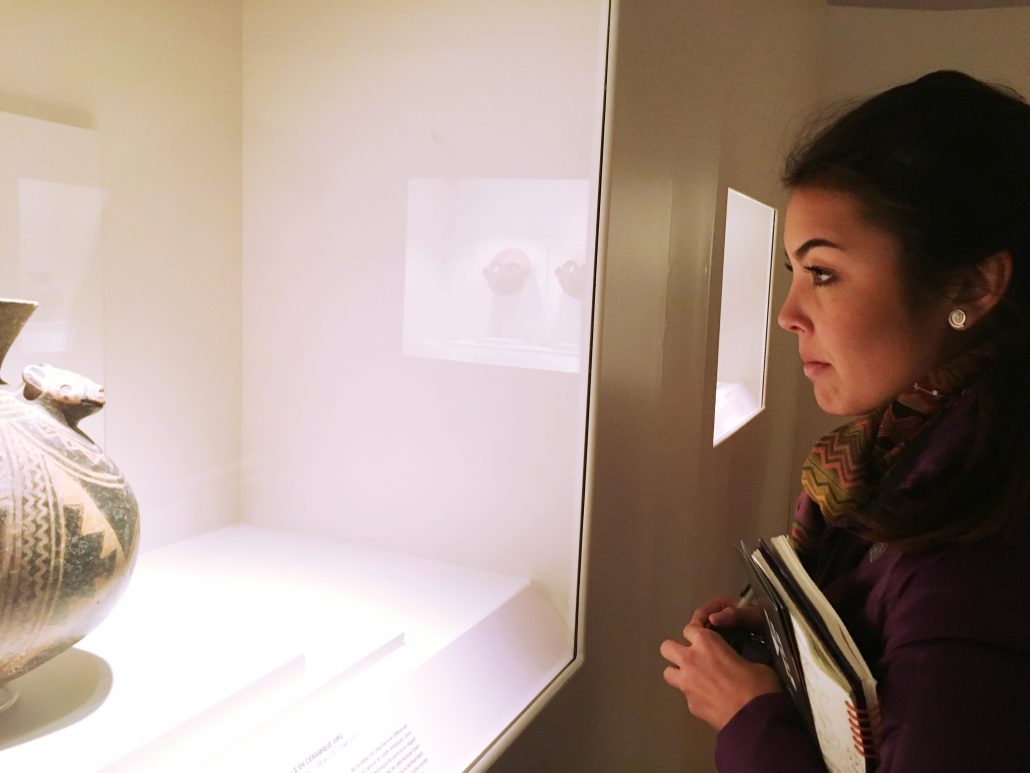
We were overwhelmed by how incredible the food in Cusco is. For breakfast we loved Qura (a small coffee shop with the best avocado toast), Japeita Coffee Break (a locally owned coffee shop with great empanadas) and Monkey Café (the best coffee we had in Peru). For lunch and dinner, we went to Pachapapa (a cozy place for traditional Peruvian dishes), Limo (Japanese-Peruvian fusion with great cebiche), MAP Café (located in the Museo de Arte Precolombino, elegant but pricey food), and Chicha (Peruvian fusion with great drinks). While these were some of the nicest restaurants in Peru they were all pretty reasonably priced especially for the quality of food. We enjoyed every meal immensely and wish we had more time to visit many other great restaurants.
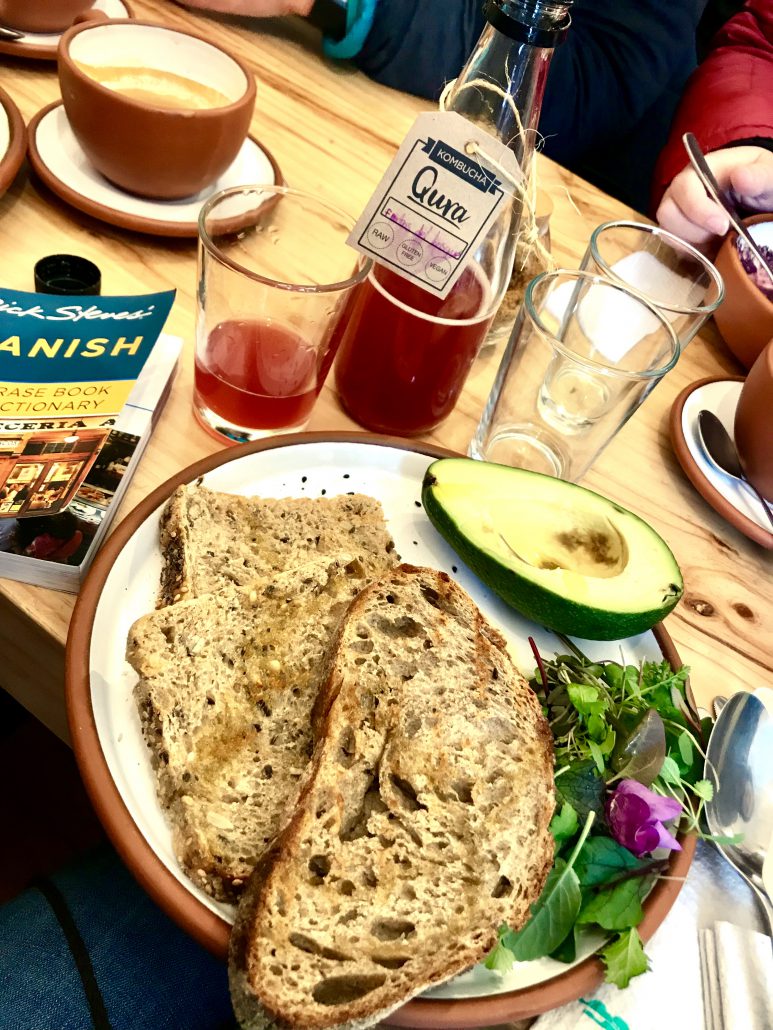
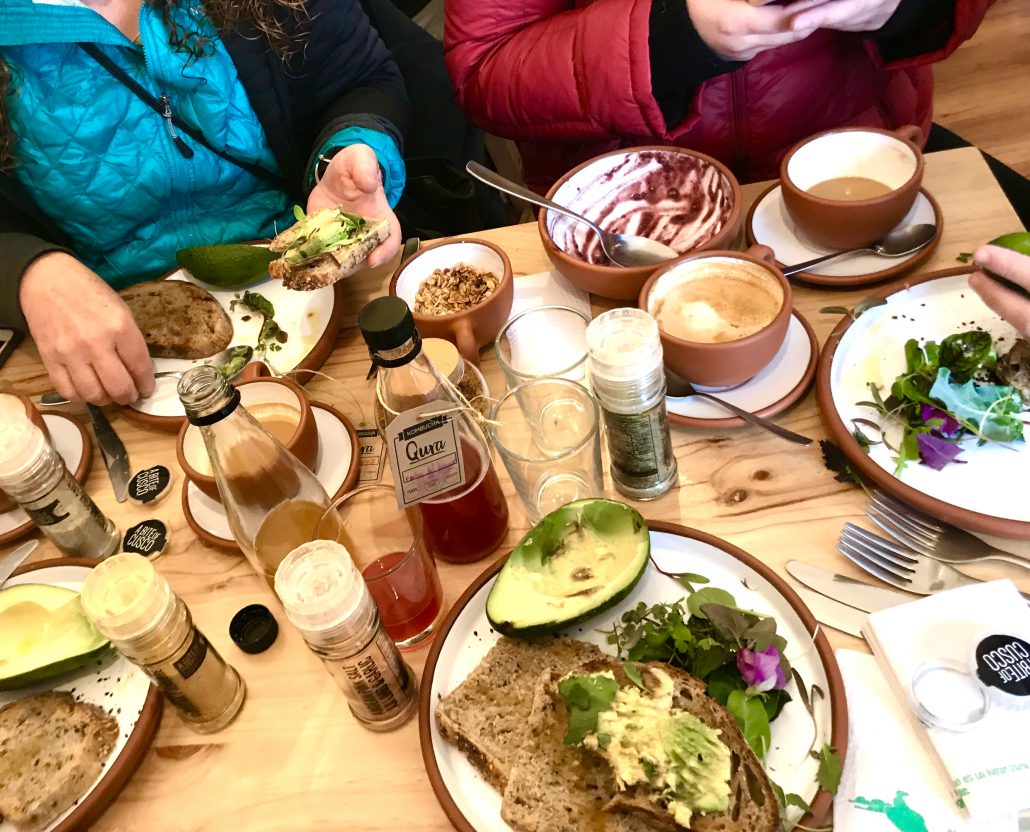

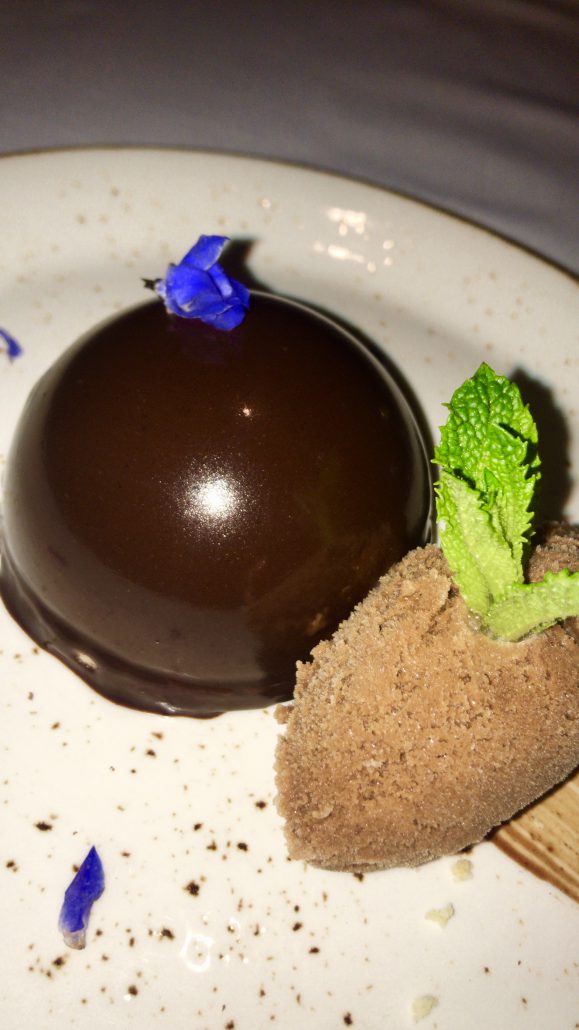
Sacred Valley
After exploring the city of Cusco we spent a couple of days visiting the Sacred Valley. There is an overwhelming amount of options when it comes to tour companies that you can use to visit Cusco and neighboring areas. We decided on the Sam Travel tour company because of their emphasis on fair-pay and using local guides. Our tour guide picked us up in a van and we spent the day driving to various locations around the Sacred Valley.
We visited the Santuario Animal de Ccochahuasi: an animal sanctuary where condors, spectacled bears, andean wild cats, andean geese, alpacas, and vicuñas find shelter and rehabilitation.Tours are given in both English and Spanish and visitors get a chance to have close interactions with the animals living there. This sanctuary also sells beautiful textiles made by local communities nearby.]
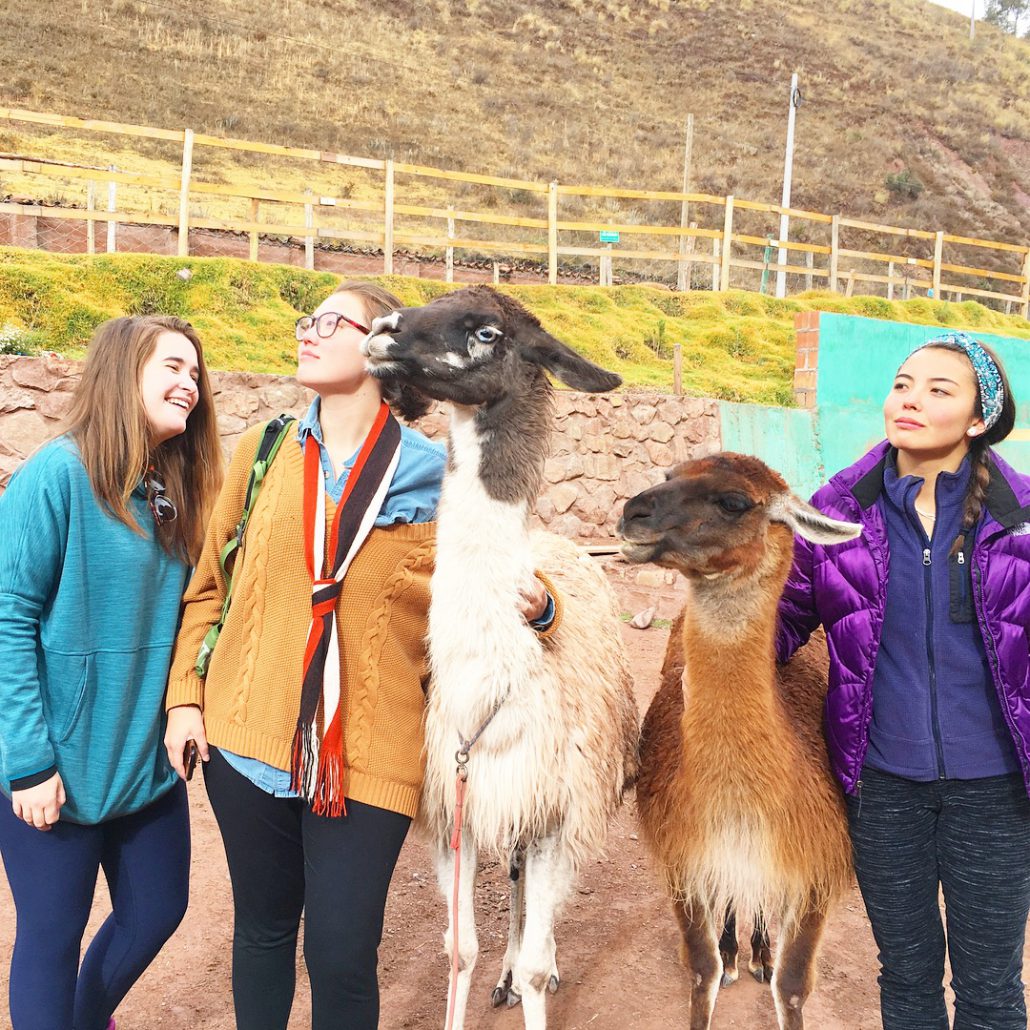
Next, we went to the Salinas de Maras. These are salt evaporated ponds where local families mine minerals from the streams flowing from the Andeas Mountains. It’s rather incredible how uniquely beautiful these mines are. The salt harvested from the Salinas de Maras is full of flavor and sold by the families for cooking and cosmetic uses.
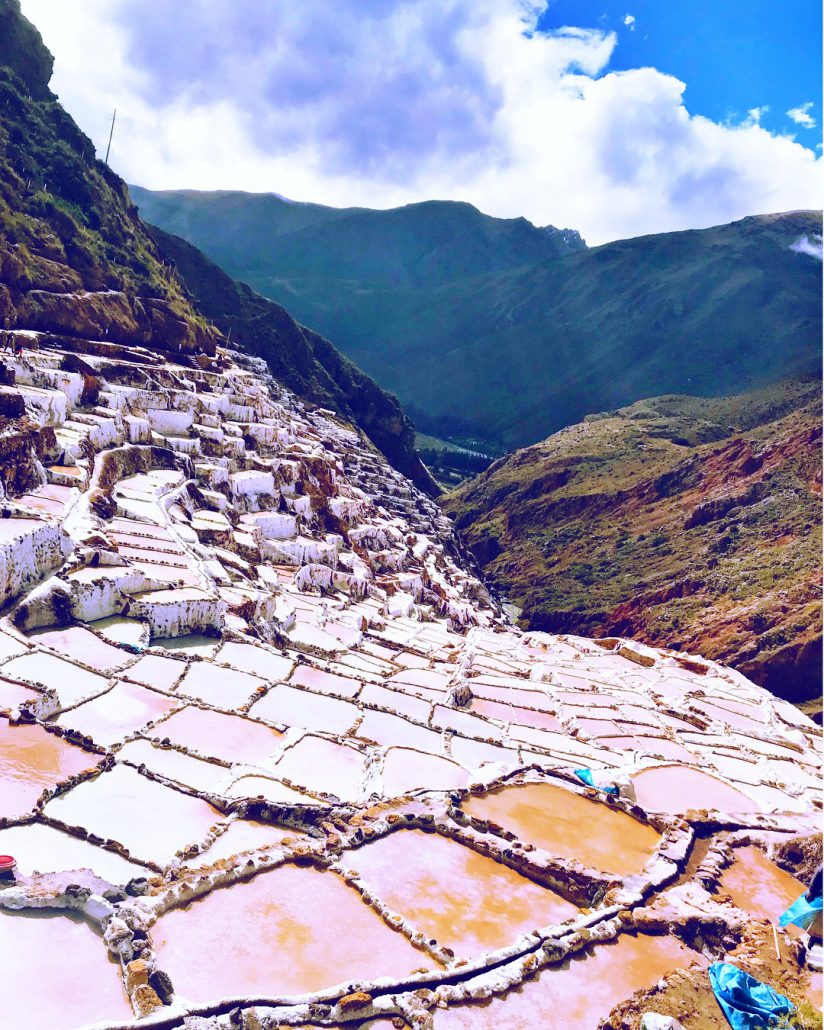
Near the salt mines is the Moray Ruins. This fascinating archeological location is the site of agricultural experimentation conducted by the Inca. These concentric terraces of varying elevations created microclimates where farmers tested the ideal temperatures and elevations for different types of potatoes, corn, and other vegetables. Many researchers believe that the experiments conducted in these terraces led to the large varieties of Peruvian potatoes.
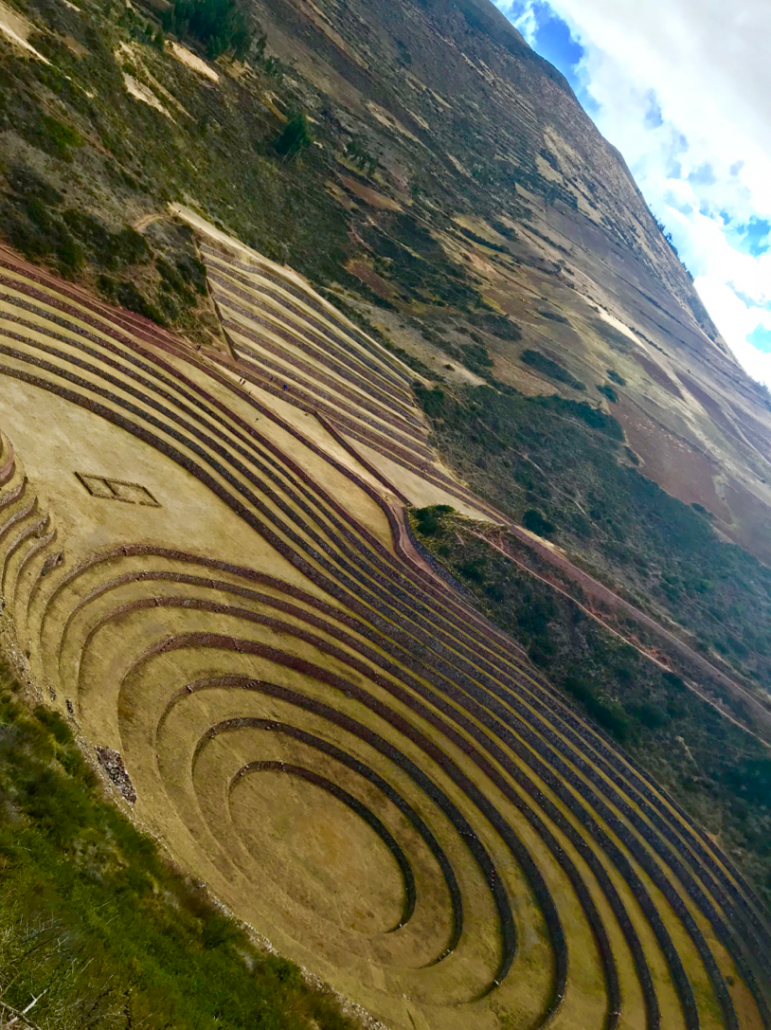
Our final destination in the Sacred Valley was the Ollantaytambo Ruins. These ruins were created by the Inca ruler Pachacuti as a ceremonial center for the surrounding town. Visitors can explore the terraces, temples, and storehouses built by the Inca in the mid-15th century. The town of Ollantaytambo also has a train station that many tourists use to transport to Machu Picchu. My family and I stayed in a hotel near the train station to prepare for our trip to the infamous Machu Picchu.
Mika Nagamoto studied abroad in Lima and Iquitos, Peru, in summer 2018: https://ieo.ucla.edu/travelstudy/GlobalHealth-Lima/



